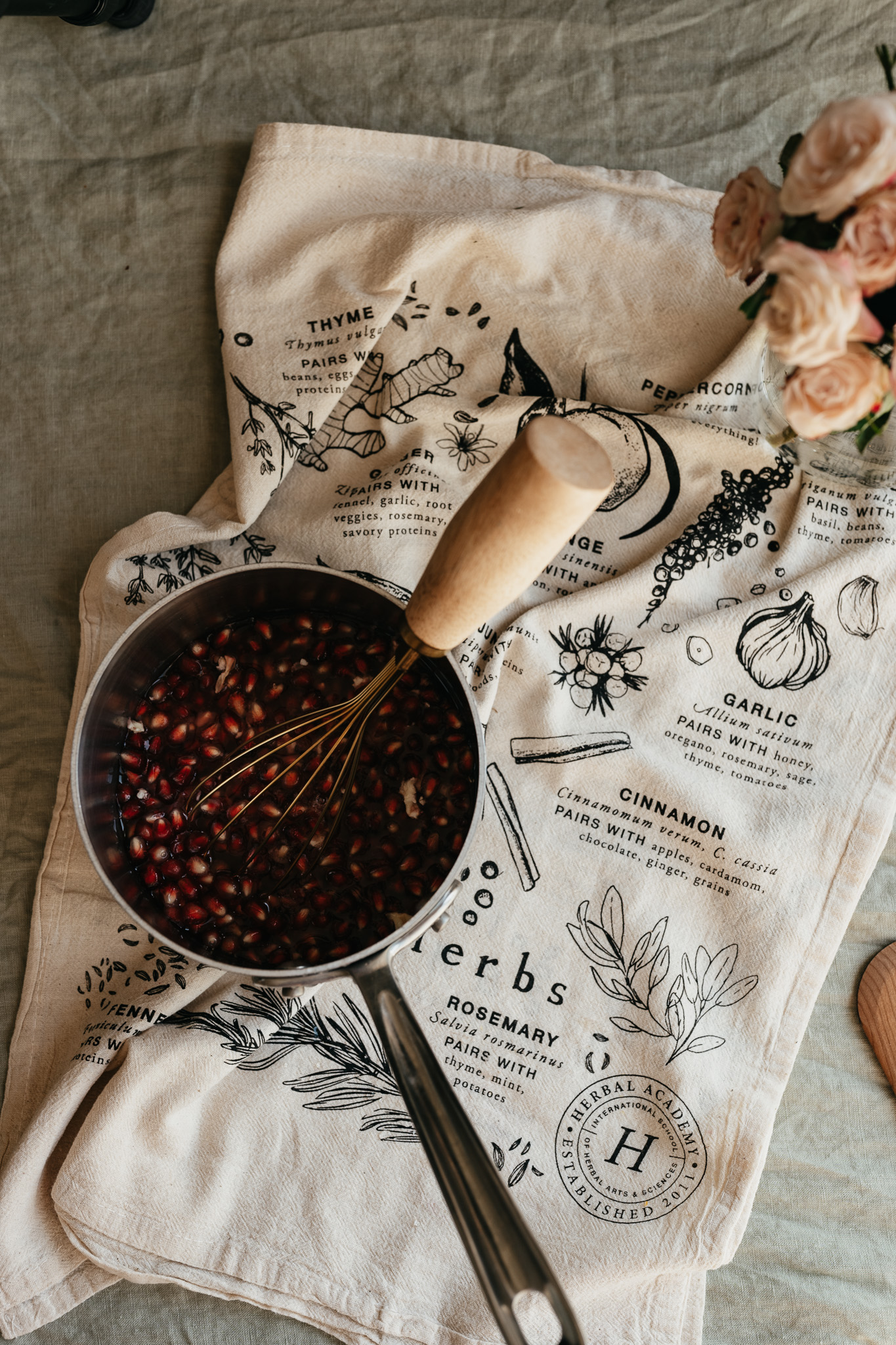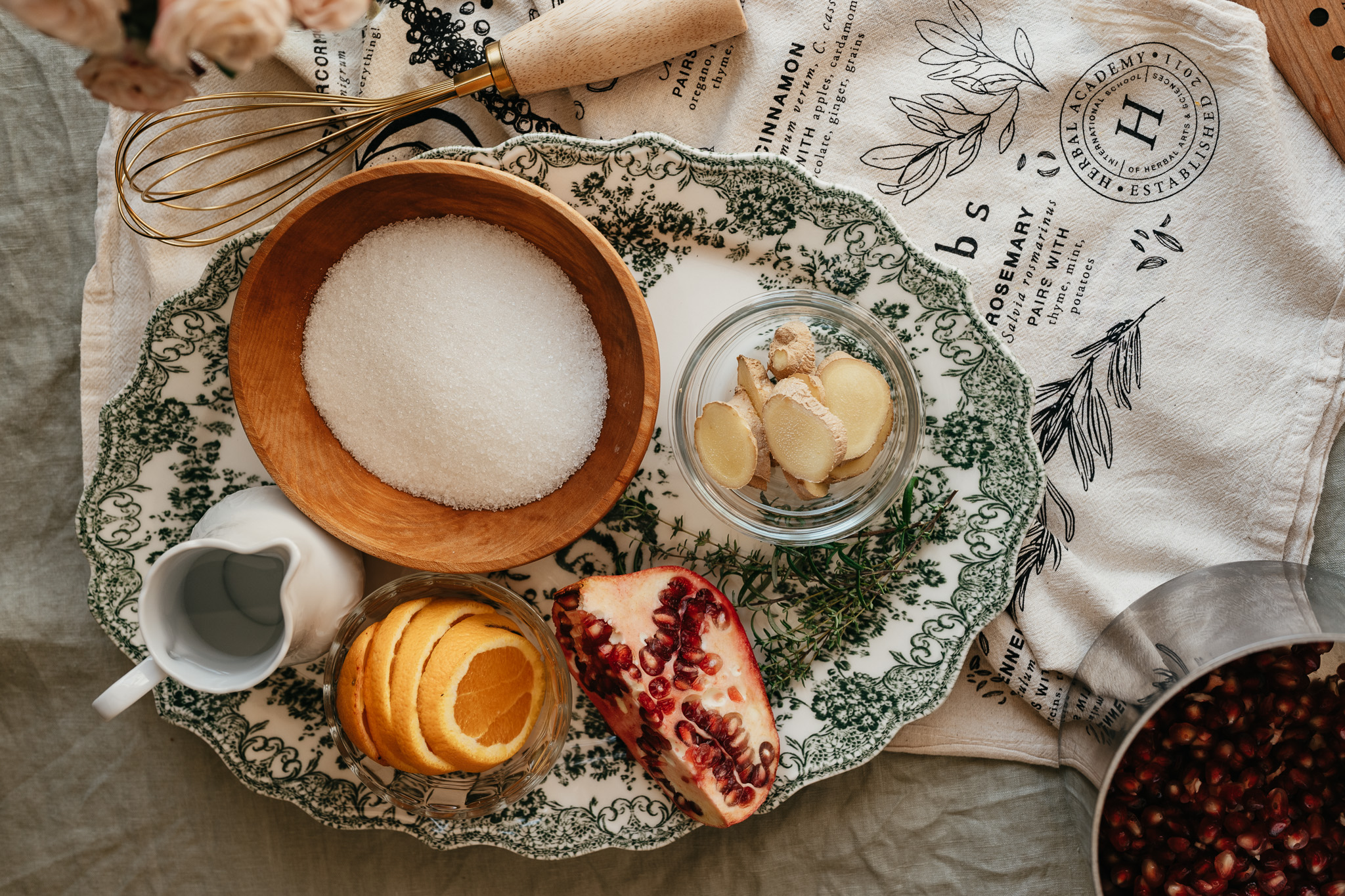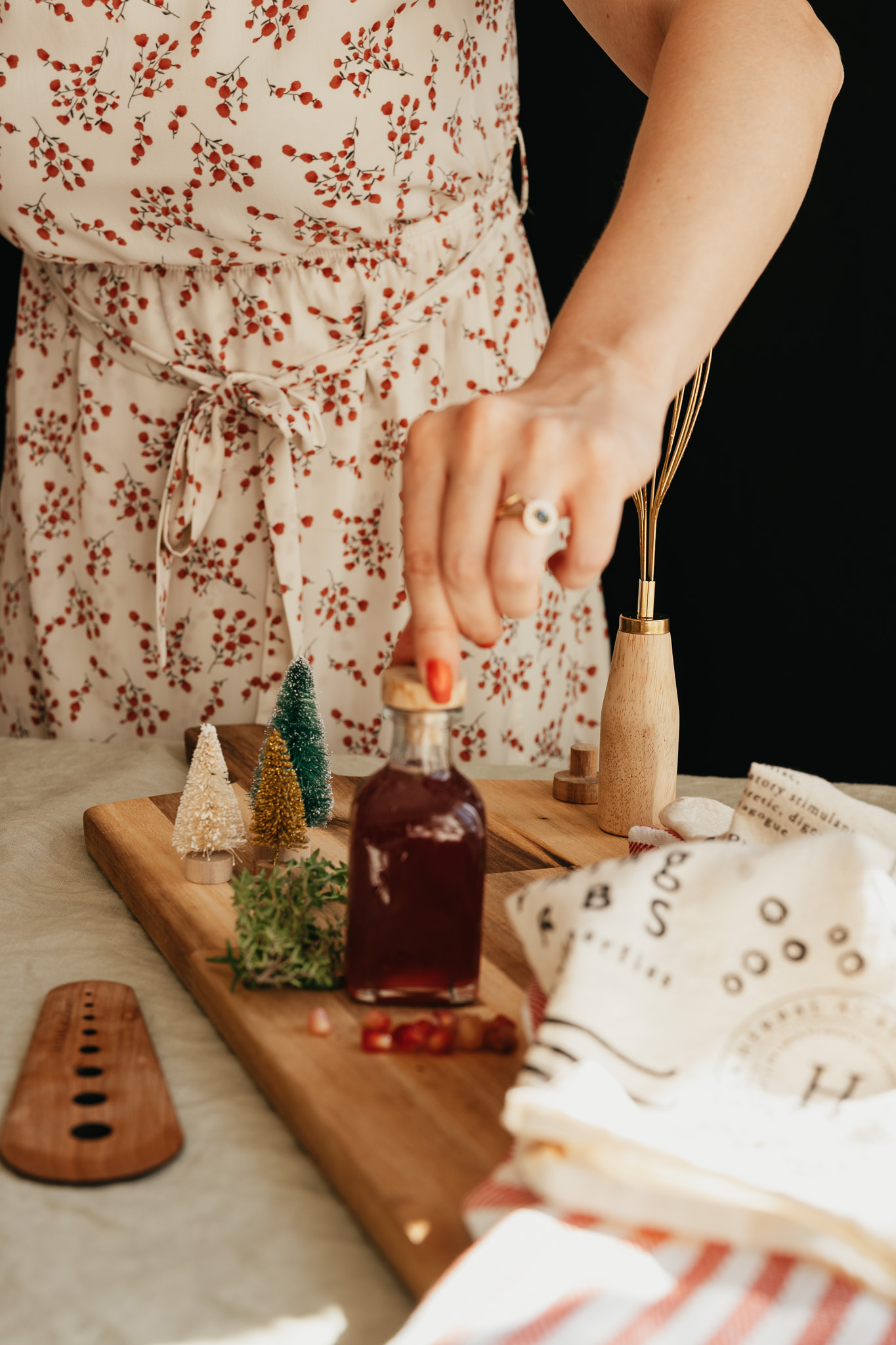
An Easy Ginger and Pomegranate Syrup Recipe for Both Sweet and Savory Dishes
In the fruits of antiquity through to today’s produce sections, there exists a singular food bearing a reddish-yellow peel and gem-like seeds – the pomegranate (Punica granatum). This cherished plant transcends mere taste. Though its sweet, sour, and astringent nature is a delightful treat, pomegranate has played a larger role than just a simple food throughout history. In this article, we are sharing a recipe for a simple ginger and pomegranate syrup with added fresh herbs that will make your sweet and savory dishes all the more delicious!

Pomegranate History and Legacy
Pomegranate colored the pages of ancient texts, expressed its nature in mythology and religion, and to this date is treasured across cultures for its nutritional value and health benefits.
The pomegranate’s legacy is spread alongside civilization itself, with the roots of pomegranate cultivation tracing back to 3000 BC (Wu & Tian, 2017). Native to the Middle East and Central Asia, this plant has long been depicted in art and literature. The pomegranate symbolizes fertility, abundance, and eternal life in much of cultural mythos and religion.
In ancient Persia, the pomegranate held a revered status as a symbol of prosperity and fertility, often depicted in art and mentioned in religious texts. There is a famous Persian myth found in the Epic of Kings, where the heroic warrior, Isfandiyar, consumes a consecrated pomegranate and becomes invincible. Throughout history, the fruit found its way into the folklore and traditions of diverse cultures, from the Middle East to Asia.
In Greek mythology, the story of Persephone, the goddess of spring, and her abduction to the underworld by Hades, god of the underworld, implicates the consumption of pomegranate to the goddess’ bound state. Persephone consumed a few pomegranate seeds while in the underworld, embodying the perpetuity of marriage, tying her to Hades and the underworld from then on. Demeter, Persephone’s mother, was devastated. Through her mother’s grief, she refused to allow the land to bloom, until a compromise was reached, and she was only made to return to the underworld for a portion of each year, marking the barren winter seasons.
The pomegranate tree belongs to the family Lythraceae. It is a deciduous shrub or small tree that can grow up to 16 feet in height and is characterized by glossy, leathery leaves and large, striking scarlet to white colored flowers (Eghbali et al., 2021). The fruit itself is a true botanical marvel, classified as a berry but encased in a thick, leathery rind, housing hundreds of juicy, golden to ruby-red seeds, which are often misrepresented as arils, but are correctly classified as seeds (Melgarejo et al., 2024).
Throughout various cultures and herbal traditions, pomegranate has been used as an astringent. This plant is high in hydrolyzable tannins with a type of ellagitannin called punicalagins (Kostka, 2020), giving the fruit some of this tissue-contracting sensation. The bark and peel are high in these tannins as well and have been applied as an astringent to ease conditions such as diarrhea, and as a styptic to stop bleeding (Wu & Tian, 2017).

A Nutritional Powerhouse
Beyond its captivating place in history and botanical intricacies, the pomegranate stands as a nutritional powerhouse and has entered modern-day superfood status. The deeply colored flesh of pomegranate seeds contains a high amount of polyphenols, particularly anthocyanidins, which exhibit potent antioxidant properties reducing inflammation and oxidative stress, and helping to protect from cellular damage (Kostka, 2020).
Pomegranate syrup is one way to enjoy this delicious fruit! From waffles, pancakes, and French toast to roasted and baked meats, this syrup will add the perfect sweet and tart taste to your dishes. You can also try your pomegranate syrup in a Persian dish called Fesenjan, a savory stew made with pomegranate, molasses, and walnuts.

This simple ginger and pomegranate syrup recipe with added fresh herbs will make sweet and savory dishes all the more delicious!
1 cup waterGinger and Pomegranate Syrup Recipe
½ cup pomegranate seeds
1 small orange, sliced
Fresh ginger (Zingiber officinale), sliced or grated, to taste
2 sprigs of fresh (or 1 teaspoon dried and finely chopped) herbs of choice (such as rosemary and thyme)
1 cup sugar or honey

In Closing,
With their irresistible flavor, nutritional bounties, and health benefits, pomegranates make a versatile addition to many meals. For a delightful culinary experience, explore traditional recipes from regions where pomegranates have long been cherished. The possibilities of pomegranates are as captivating as they are delicious.

REFERENCES
Eghbali, S., Askari, S.F., Avan, R., & Sahebkar, A. (2021). Therapeutic effects of Punica granatum (Pomegranate): An updated review of clinical trials. Journal of Nutrition and Metabolism. https://doi.org/10.1155/2021/5297162
Kostka, T., Ostberg-Potthoff, J.J., Briviba, K., Matsugo, S., Winterhalter, P., & Esatbeyoglu, T. (2020). Pomegranate (Punica granatum L.) extract and its anthocyanin and copigment fractions-free radical scavenging activity and influence on cellular oxidative stress. Foods, 9(11), 1617. https://doi.org/10.3390/foods9111617
Melgarejo, P., Martínez-Nicolás, J.J., Núñez-Gómez, D., Almansa, M. S., & Legua, P. (2024). Accurate botanical nomenclature: Pomegranate and the ‘aril’ misconception. Foods, 13(2). https://doi.org/10.3390/foods13020201
Wu, S., & Tian, L. (2017). Diverse phytochemicals and bioactivities in the ancient fruit and modern functional food pomegranate (Punica granatum). Molecules, 22(10). https://doi.org/10.3390/molecules22101606







